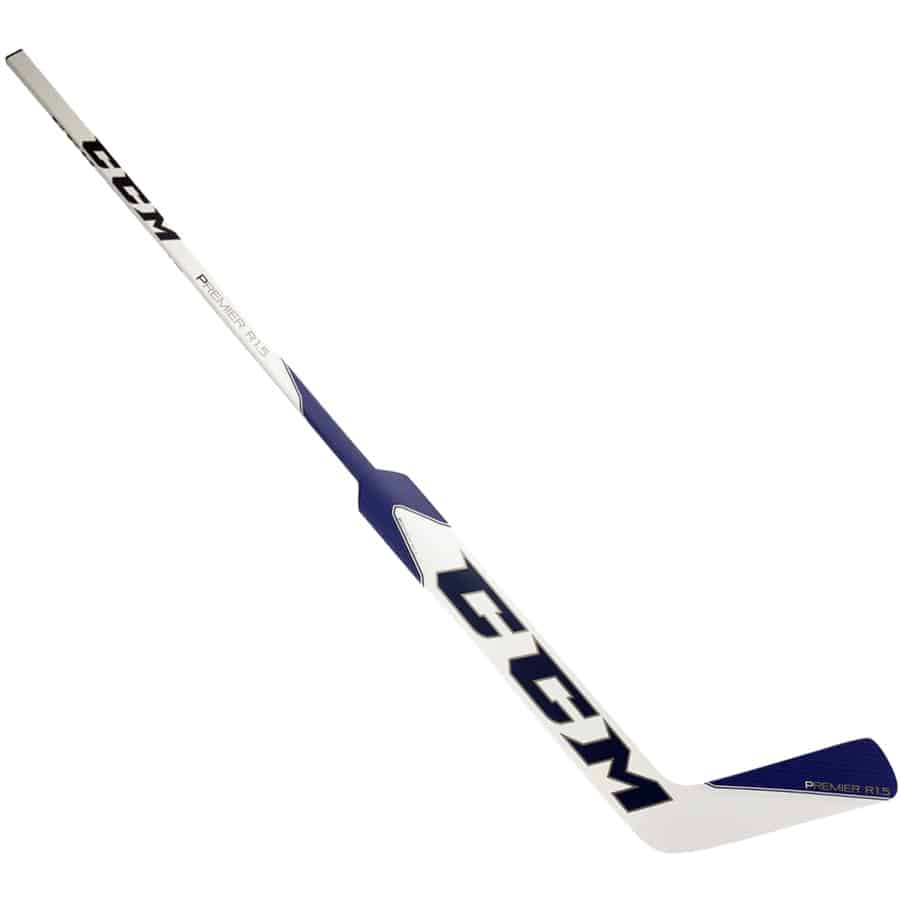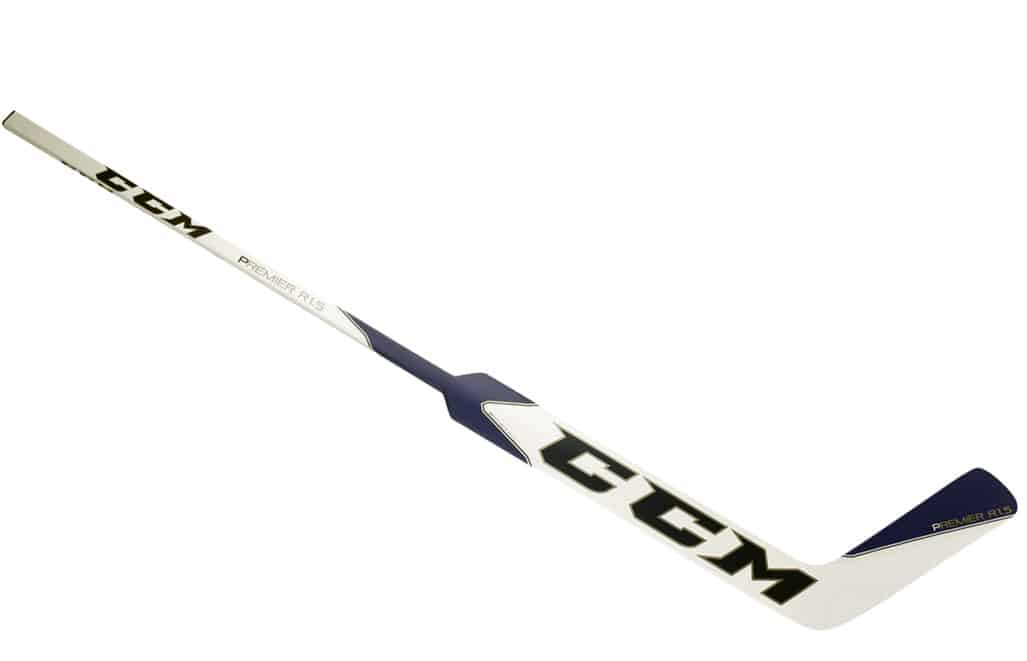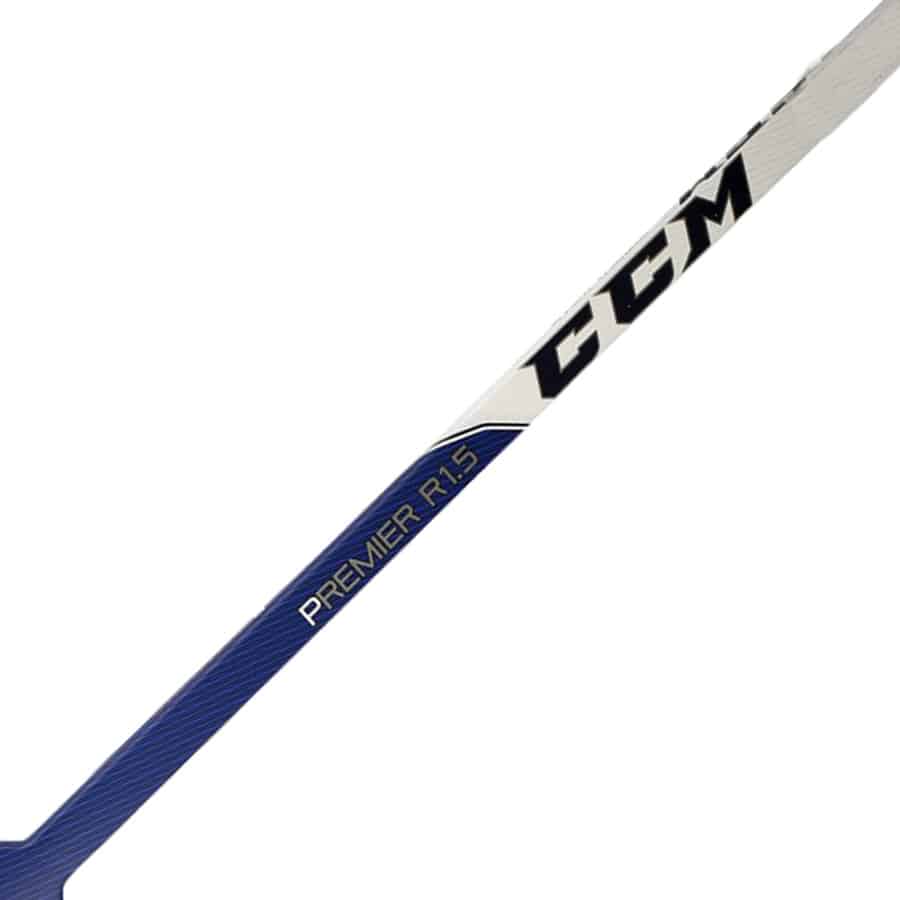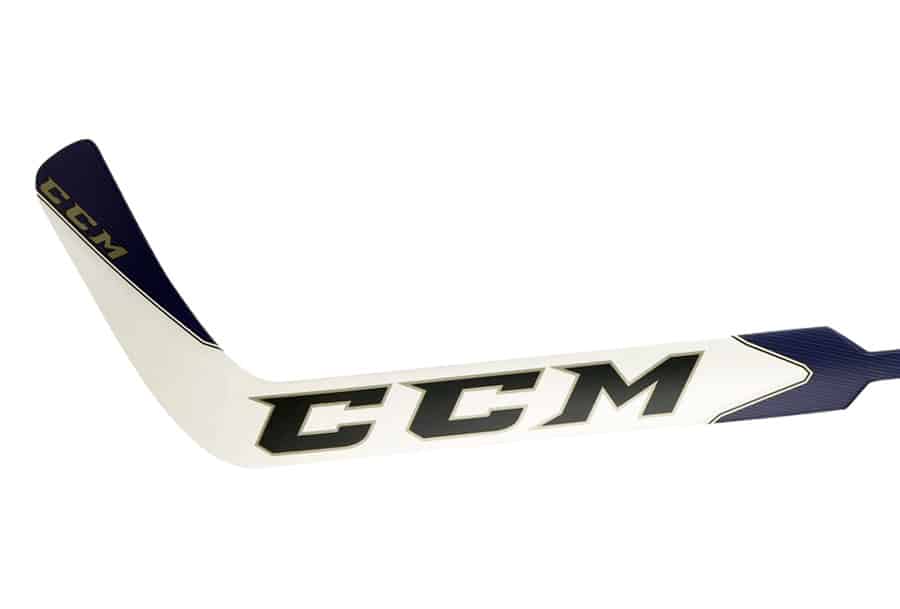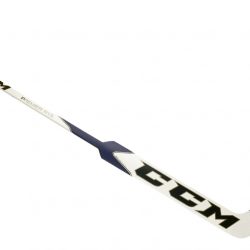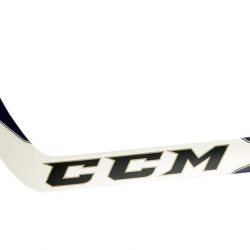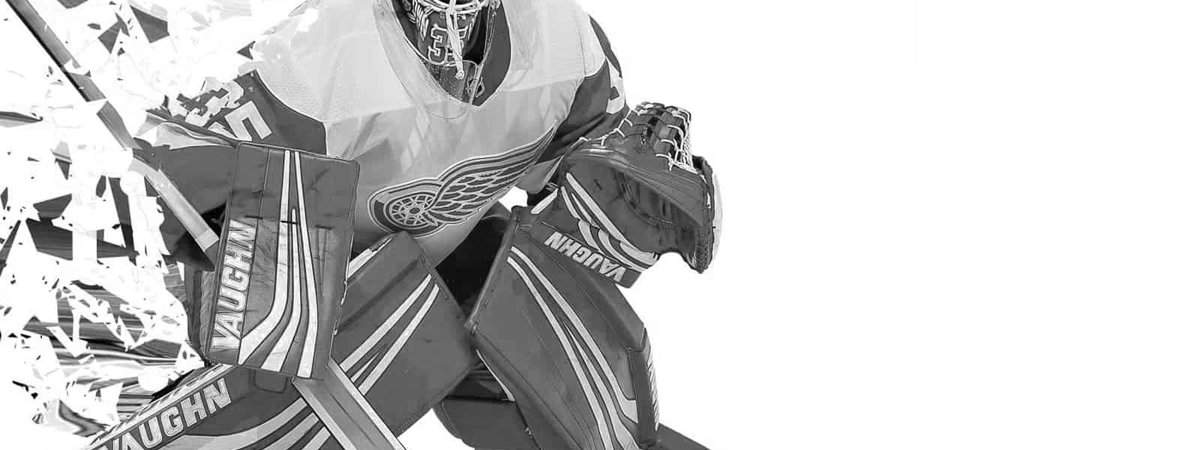
We strive to provide the ultimate shopping experience for goalies seeking the best in gear, prices, and service. Our extensive expertise in the goalie gear industry, spanning over 20 years, allows us to offer unparalleled customer service and expert advice. Whether you're a seasoned pro or new to the game, our knowledgeable team is dedicated to helping you find the perfect gear to match your needs. Don't hesitate to reach out to us with any questions.
Please note: all prices are in US dollar.
The CCM Premier R1.5 Senior Composite Goalie Stick is a composite construction goalie stick.
CCM Premier R1.5 Composite Goalie Stick
CCM has completely redesigned its composite goalie line. The new Premier R1.5 goalie stick was developed using a goalie approach to the best technologies found in CCM’splayer stick lines. From the shape of the shoulder to the composition of the stick, everything has been optimized to bring the lightest and best feeling composite goalie stick to the crease.
CCM Premier R1.5 Composite Goalie Stick Features:
- Paddle: Full matte finish for great feel and overall control
- Blade: A stiff blade to help with greater accuracy and control of deflections
- Construction: A light composite structure to help provide great feel and durability
- Available in sizes 25, 26, 27 paddle lengths
- White/Black and White/Blue matte colors
Goalie Stick Construction Differences – Wood, Foam Core & Composite
A frequently asked question by our customers focuses on the differences between a Wood, Foam Core or Composite goalie stick. Beyond respective price range, each type of stick and construction possesses a unique set of benefits and potential drawbacks. there is more to the differences in these type of sticks other than just price. A more detailed analysis of each is as follows:
Wood Sticks:
The first category of stick construction involves the use of traditional wood. With a history that (at least) dates back to the early 1800’s, the earliest hockey sticks were crafted from wood. In the 1950’s, the blades of the original “one-piece” wooden sticks were wrapped in fiberglass to increase durability. Since the development of the composite stick, the use of the traditional wooden stick has become less common. However, a well-crafted wooden stick will remain consistently stiff from “heel-to-handle” throughout its use and may actually provide better feel for goalies when handling the puck. In addition, wooden sticks tend to be much less expensive than foam core sticks and composite sticks.
Notwithstanding these benefits, there are two major drawbacks to using a traditional wooden goalie stick: weight and durability. Sticks made from wood are almost invariably heavier in weight, making the stick less maneuverable. Regarding durability, a wooden stick will likely start to show signs of use early on. While the traditional feel might remain, the materials bonded at the heel and blade are not as resilient as those used in a foam core or composite stick.
Foam Core Sticks:
The second category of stick includes the “foam core” goalie stick. While the foam core stick’s appearance may be similar to that of a wooden stick, a foam core stick contains compacted foam in the paddle area with a wood spine through approximately two thirds the length of the paddle. The handle of these sticks is more traditional and employs an ash/wood material. Foam core sticks are very durable as the compacted foam is highly resistant to cracking and chipping.
In addition, the compacted foam allows the foam core stick to be lighter than traditional wooden sticks. However, the frequently cited issue with foam core sticks is that they develop increased and undesired flexibility over time. The most common source of this criticism comes from goalies who are more inclinded to stick handle and note that the stick appears to be in perfectly good condition but possesses an inconsistency in stick handling, passing and shooting. To combat this concern, stick manufacturers have added carbon strips to the top level foam core sticks to reduce flexibility and increase consistency over time.
Composite Sticks:
The third type of stick is the composite goalie stick. Composite sticks are similar to traditional wood sticks in the sense that they are consistently stiff over the life of the stick. However compared to wood sticks, composite sticks a significantly lighter. Composite sticks are the only category of goalie stick that come with a warranty, each stick has a 30 day manufactures warranty period from the time of purchase. The major advantage of composite goalie sticks is the stiffness and the weight factor. As you go up in price on composite goalie sticks, the weight becomes increasing lighter.
A disadvantage of composite goalie sticks is vibration. Some goalies believe that the composite goalie sticks gives off a vibration when making a stick save. This philosophy seems to vary case by case depending on the goalie, some goalies believe this to be true while other do not believe this is an issue. Like most things goalie related, it comes down to a personal preference.

